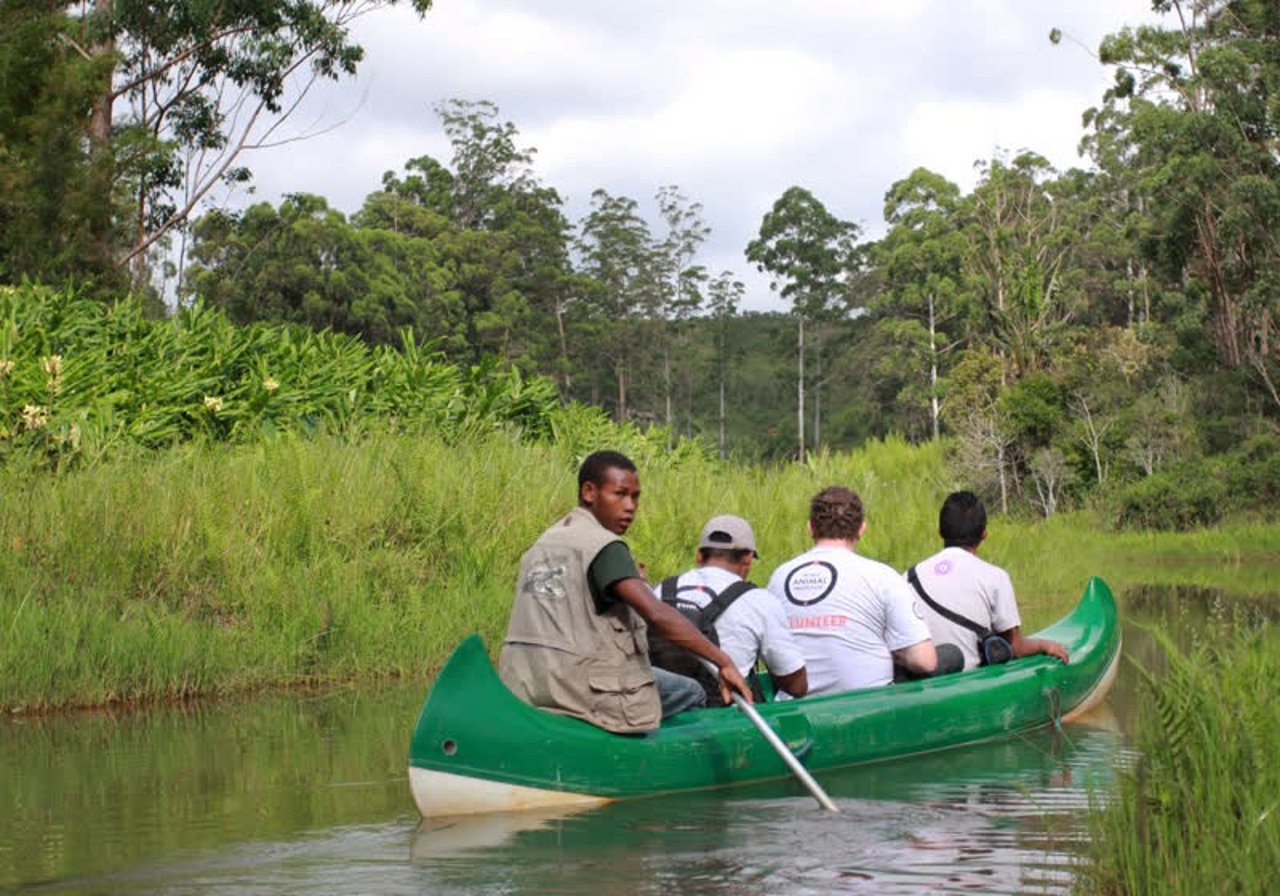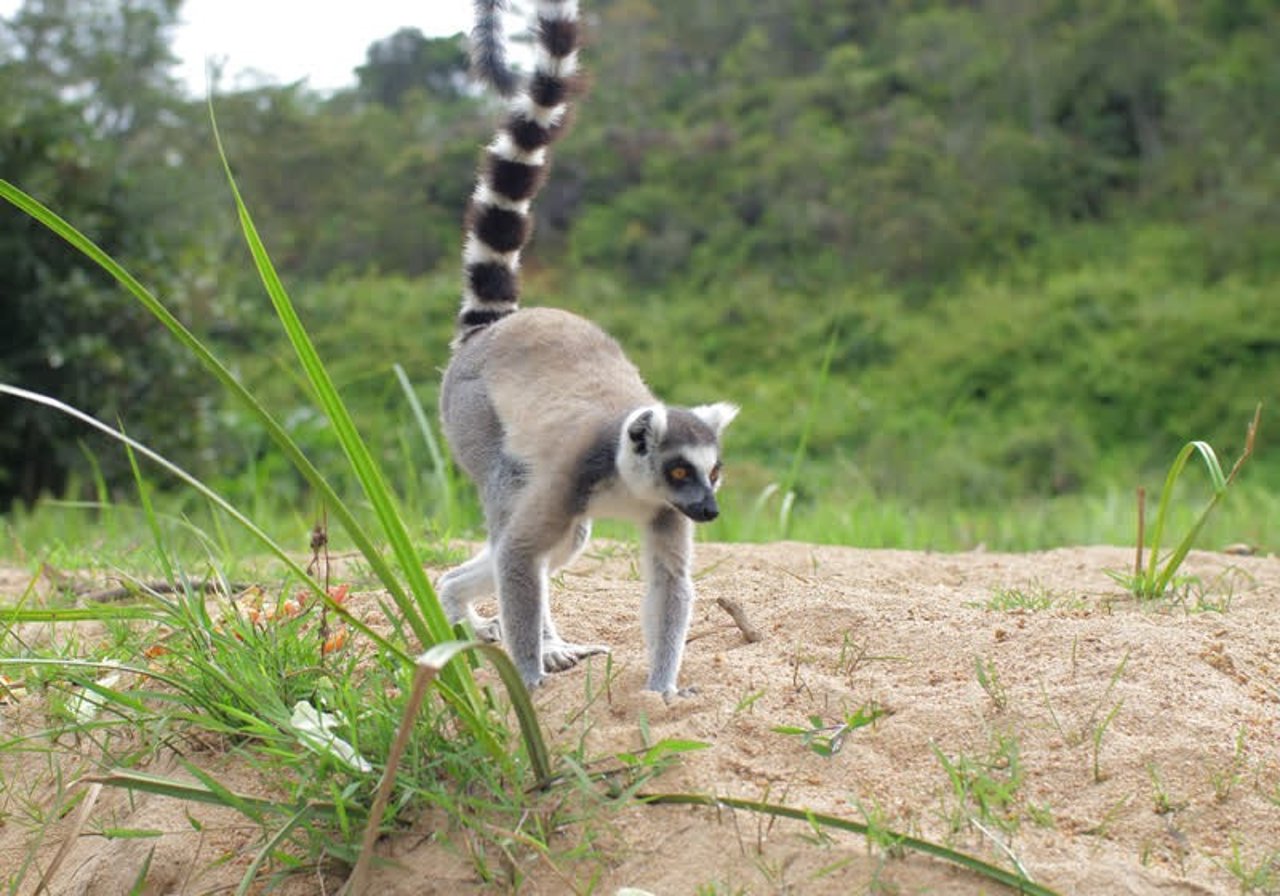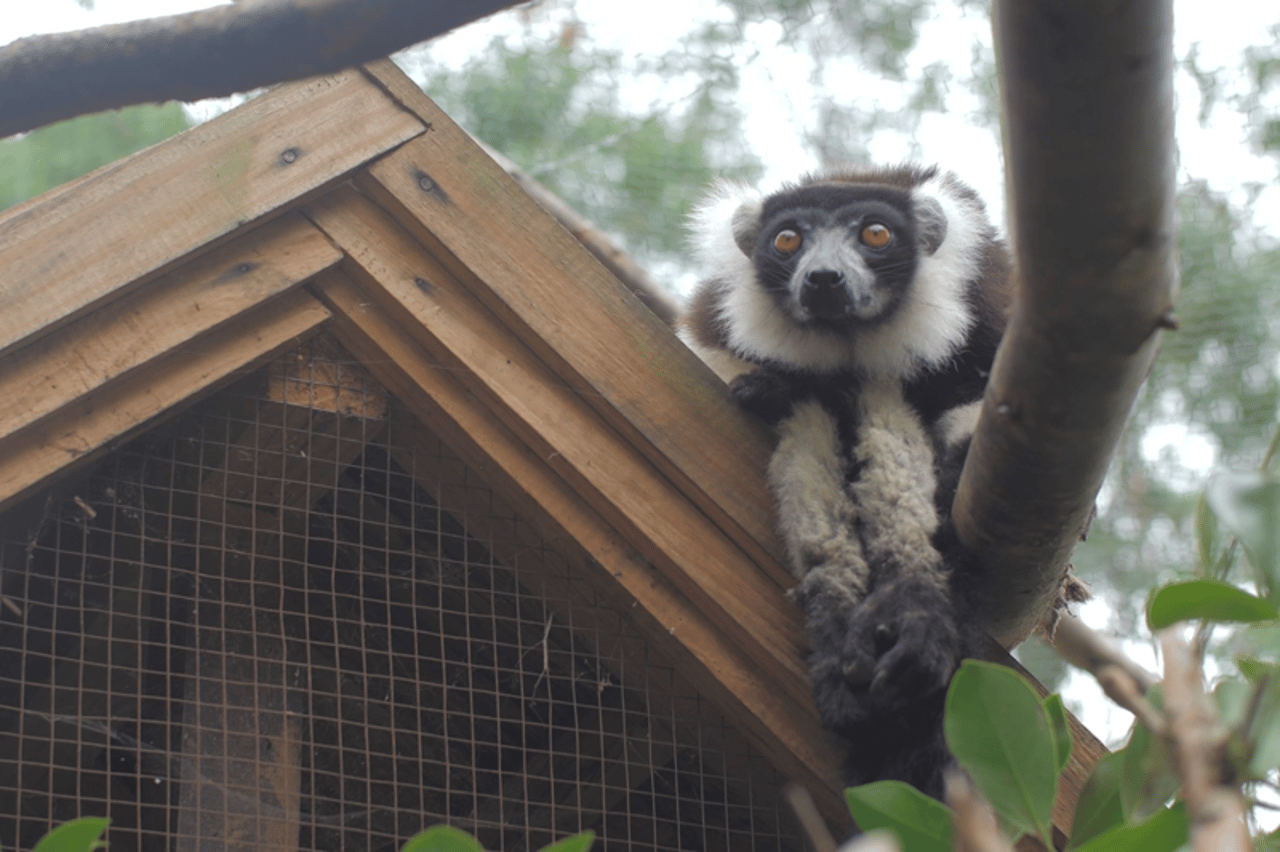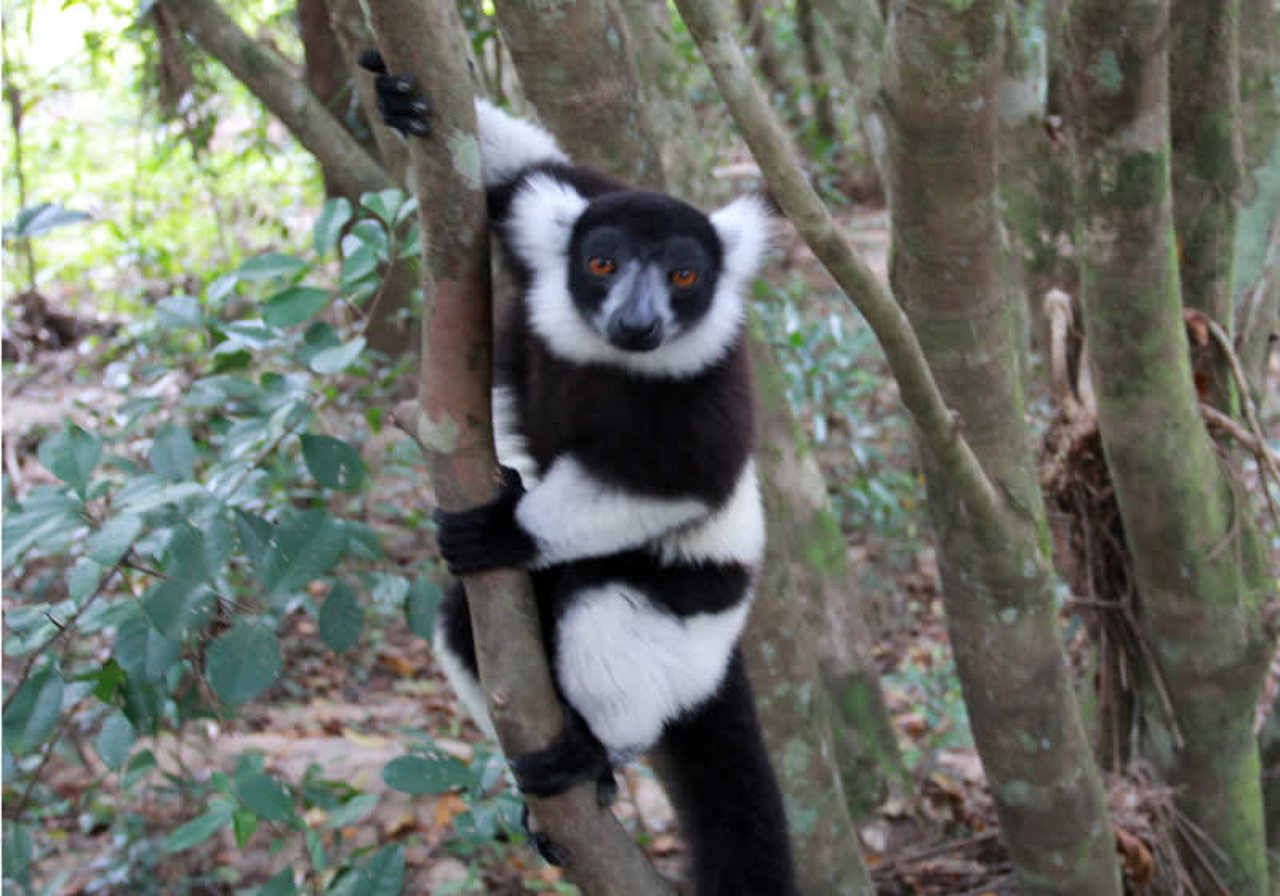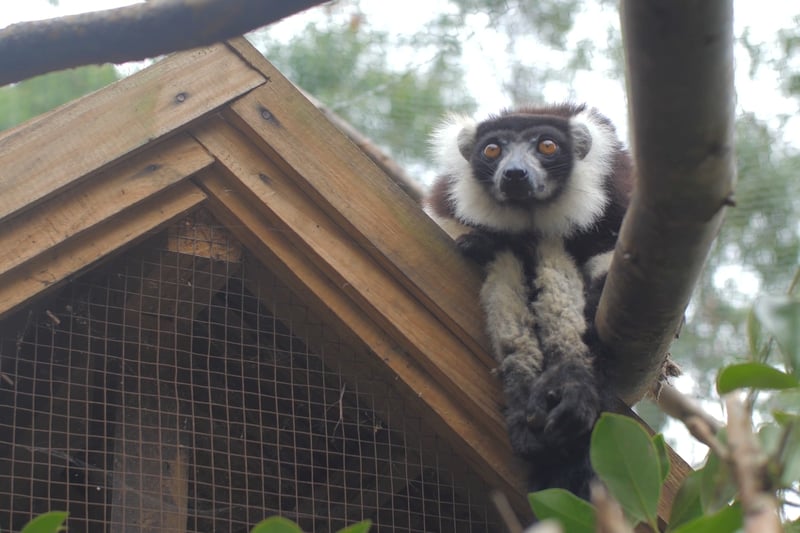
Lemur provides hope for wildlife after devastation of Cyclone Ava
Blog
Charlie was rescued after poachers shot him from a tree with a slingshot, he fell from a great height and was then immediately attacked by a dog.
In early January, Cyclone Ava slammed into the east coast and stripped leaves from trees, knocked down sections of forests and destroyed natural food sources.
Animals like lemurs and parrots were left exposed and hungry, making them even more vulnerable to the illegal wildlife traffickers.
Working with Vakona Reserve
Our wildlife disaster management strategy involves helping to build the resilience of local wildlife, especially in a country like Madagascar, where we must secure the release of confiscated or surrendered animals into high welfare reserves where they will be protected from future cyclones and droughts.
The team at Vakona Reserve.
One of these reserves is the Vakona Reserve, located in eastern Madagascar. Run by Anouk Giavarini-Izoard, a third-generation Malagasy, Vokona is home to a number of rescued or surrendered exotic pets and trafficked animals, and Anouk has gone to great lengths to provide as many natural habitats for these animals as possible.
Vakona's Lemurs
Across five islands, left mostly wild and spanning nearly 30 acres, are the lemurs. There are 305 lemurs in the park, including the very first known diademed sifaka born in a reserve or any form of captivity.
A ring tailed lemur at Vakona Reserve.
From the Eastern lesser bamboo lemurs (which are the size of kittens), to the iconic ring tailed lemurs that jump from tree to tree, the trees of Vakona's islands hold the beauty of these endangered primates.
And on the final island, mainly populated with a couple of sub-species of black and white ruffed lemurs on the path toward extinction, we met a very special lemur who had his very own protection house made of netting and wood.
Charlie the lemur
Charlie, the lemur who had his own protection house, moved differently than the others.
He stuck to his house or the area directly around it.
When asked about why Charlie was isolated from the other lemurs, Anouk said that “Charlie was rescued after poachers shot him from a tree with a slingshot, he fell from a great height and was then immediately attacked by a dog.”
The poachers abandoned him when they realized the trauma had left the poor animal paralysed from the waist down.
Charlie,the 4 year old black and white lemur that was rescued from poachers.
Anouk insisted that the veterinarians try to save him despite their recommendation to euthanise him. “I saw life in him and I know how few of his kind are left,” she said.
After numerous operations and careful rehabilitation, Charlie survived, but as a paraplegic, he is unable to move as quickly or defend himself like the other lemurs. Instead of giving up on Charlie, Anouk had her staff build him the enclosure for protection.
Shortly after this enclosure was built, the most amazing thing happened...the other black and white ruffed lemurs began to hang around, and soon after, Charlie and the group of lemurs were vocalizing.
Eventually, Anouk decided to allow the lemurs to mix with Charlie, closely monitoring them to keep him safe.
Each day the other lemurs would enter the enclosure, and soon, they were spending most of their day alongside or nearby Charlie. After a while, Charlie’s “house” became the preferred sleeping spot for the whole troop.
One of the black and white lemurs troop that have adopted Charlie.
Hope for Madagascar wildlife
Despite the destruction of natural food sources and land caused by cyclone Ava, Anouk remains optimistic about the future of Madagascar wildlife.
"In the short time I was there, I saw two reports of seizures of wildlife being trafficked out of the country and talked to dedicated vets, animal lovers and conservationists, fighting to save Madagascar’s remaining wildlife.
Then, on top of that, realizing that the cyclone had only made things worse for the animals was enough to discourage even the most ardent optimist for their future.
But stories like Charlie’s show that we can make a difference, that every animal deserves a chance and as long as there are people like us who care for wildlife, there is hope for these vulnerable but unforgettable creatures."
“I saw life in him and I know how few of his kind are left.
